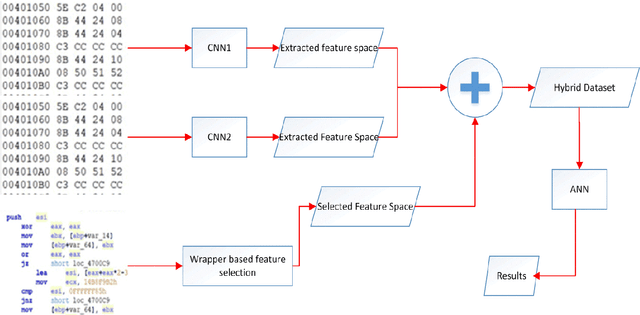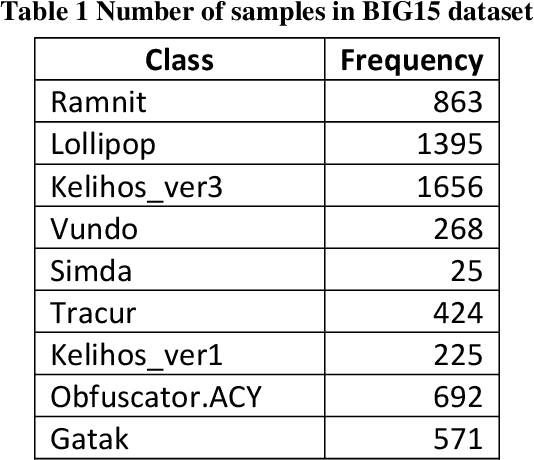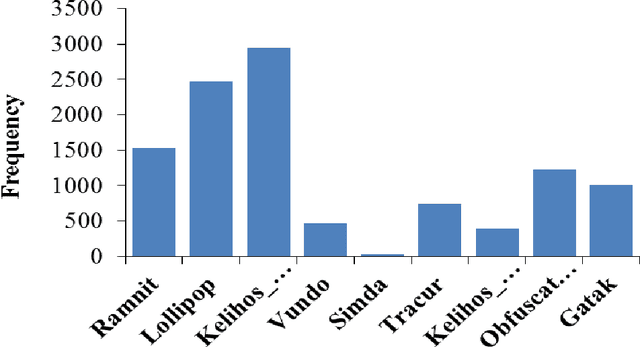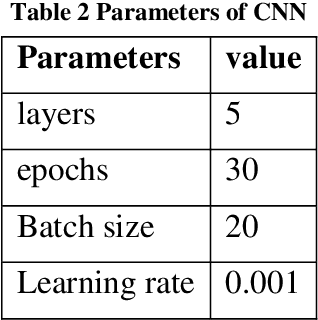Anwar Majid Mirza
Malware Classification using Deep Learning based Feature Extraction and Wrapper based Feature Selection Technique
Nov 26, 2019



Abstract:In case of behavior analysis of a malware, categorization of malicious files is an essential part after malware detection. Numerous static and dynamic techniques have been reported so far for categorizing malwares. This research work presents a deep learning based malware detection (DLMD) technique based on static methods for classifying different malware families. The proposed DLMD technique uses both the byte and ASM files for feature engineering and thus classifying malwares families. First, features are extracted from byte files using two different types of Deep Convolutional Neural Networks (CNN). After that, important and discriminative opcode features are selected using a wrapper-based mechanism, where Support Vector Machine (SVM) is used as a classifier. The idea is to construct a hybrid feature space by combining the different feature spaces in order that the shortcoming of a particular feature space may be overcome by another feature space. And consequently to reduce the chances of missing a malware. Finally, the hybrid feature space is then used to train a Multilayer Perceptron, which classifies all the nine different malware families. Experimental results show that proposed DLMD technique achieves log-loss of 0.09 for ten independent runs. Moreover, the performance of the proposed DLMD technique is compared against different classifiers and shows its effectiveness in categorizing malwares. The relevant code and database can be found at https://github.com/cyberhunters/Malware-Detection-Using-Machine-Learning.
 Add to Chrome
Add to Chrome Add to Firefox
Add to Firefox Add to Edge
Add to Edge